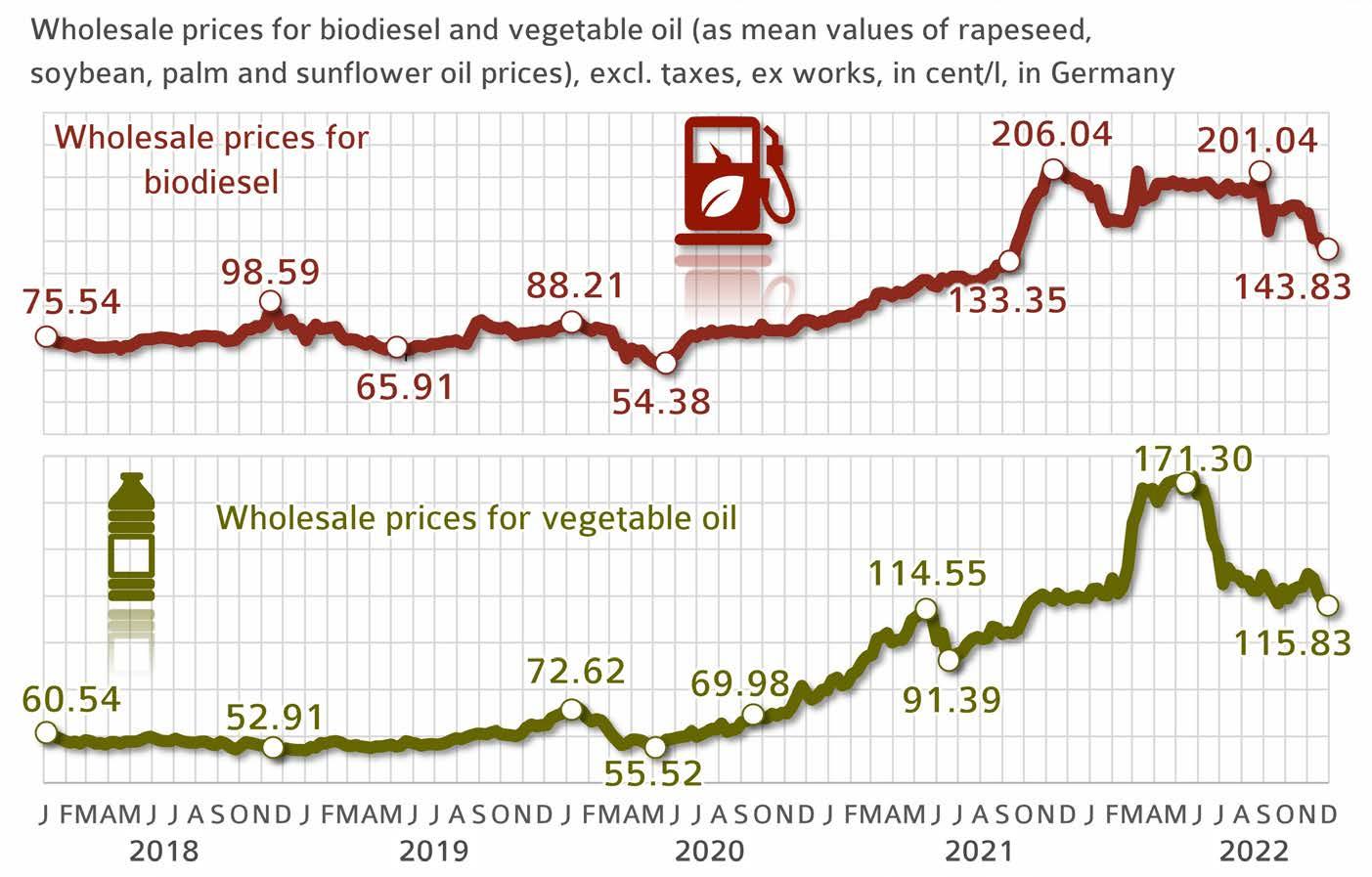
1 minute read
| Development of prices
5.1 Do biofuels push food prices up?
» 5.1.1 Comparison of prices of bread, bioethanol and grain
Advertisement
Wheat is used for both food production and bioethanol production. Many people argue that production of biofuels causes a shortage in this feedstock for food production and drives wheat prices. A look at wheat-rye bread prices does not confirm this thesis! Feedstock supply and prices at the producer level barely have an impact on bread prices. This becomes quite evident in connection with the Ukraine war. As prices of energy and feedstocks and energy-intensive items have risen sharply, consumers have indeed had to pay more for wheat-rye bread since June 2022. But he main reason for this price hike is higher energy prices.
The explosion of prices for agricultural commodities and staple foods all over the world in 2008 and the accompanying volatility of prices have moved the issue of global food to the fore. Continuing famine and poverty since then have also been associated with changes in international prices for agricultural feedstock. There is often a correlation drawn with the biofuels market when discussing the reasons for the high price levels, but there is none. Grain production in 2022/23 is less comfortable than it was in previous years. However, competition on the global market is huge and demand is reticent. This has in fact recently driven prices down. The same holds true for biofuels prices, which have fallen due to pressure from falling feedstock costs.
Price comparison of bread, bioethanol and grain
5.1 Do biofuels push food prices up?
» 5.1.2 Comparison of prices of biodiesel and vegetable oil

While energy prices saw a steep rise already in 2021, in 2022 they virtually exploded as the Russia-Ukraine war began. As a consequence, the competitive advantage of biodiesel improved, boosting demand and limiting the bottom threshold for prices. May 2022 vegetable oil prices reached a record high at 171 euro cents per litre, but did not maintain this high level due to abundant harvests and, above all, the ongoing supply with commodity from Ukraine. At the same time, estimates of demand on the global market were reduced because of China’s very strict zero-Covid policy. Although China’s Mega Cities gradually re-opened in December 2022, a pick-up in demand has not occurred to date (rising case numbers).
German biodiesel consumption was on the decline in 2022. In blending, preference was given to other GHG saving items such as bioethanol. In August, the price for biodiesel reached its annual high at 201 euro cents per litre. However, it failed to maintain this level, losing ground due to inadequate demand. Consequently, at just under 144 euro cents per litre at the end of November 2022, prices for untaxed RME were around 30 per cent below the same period of the previous year.









